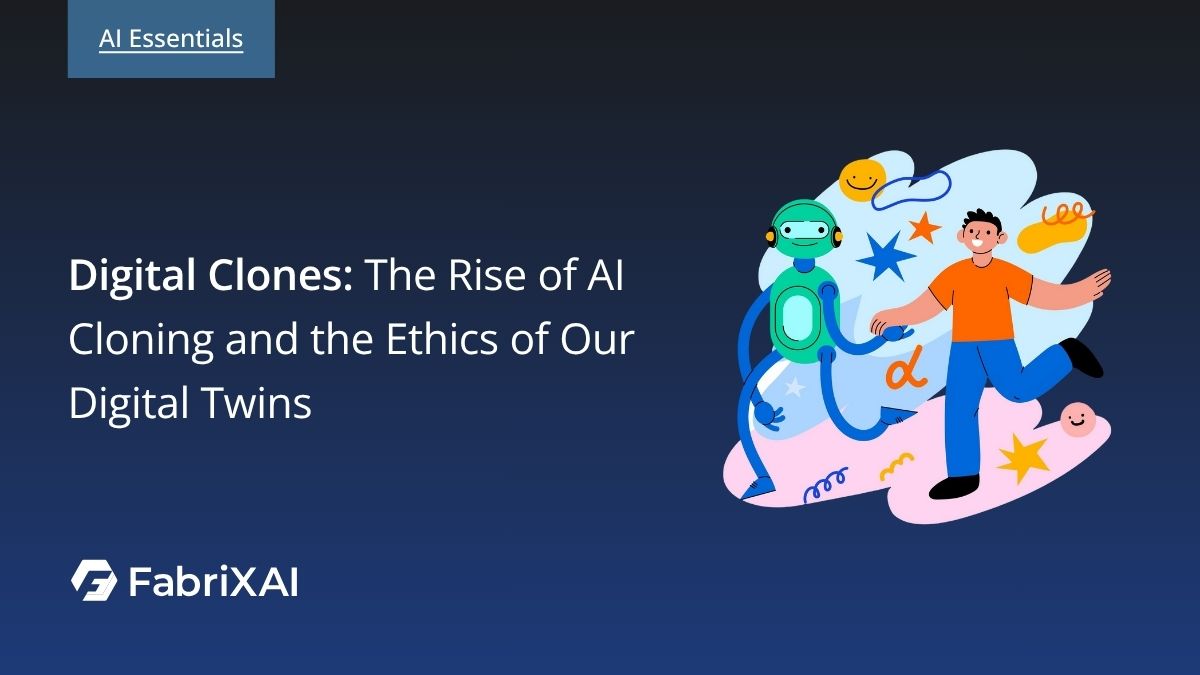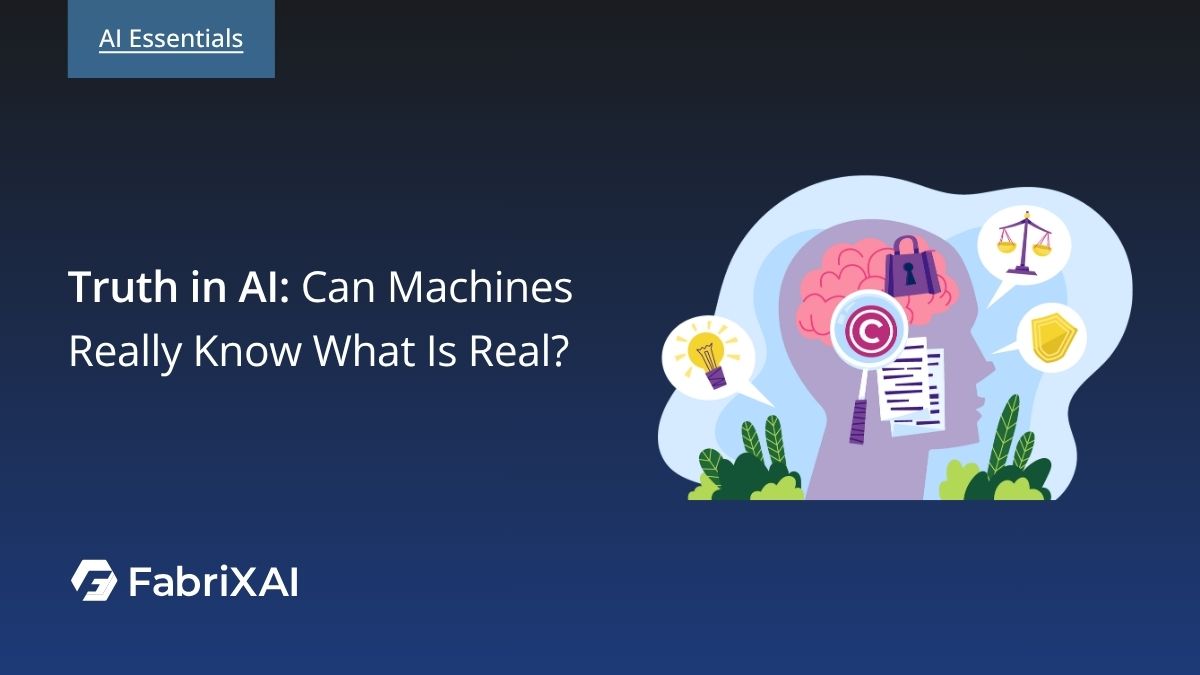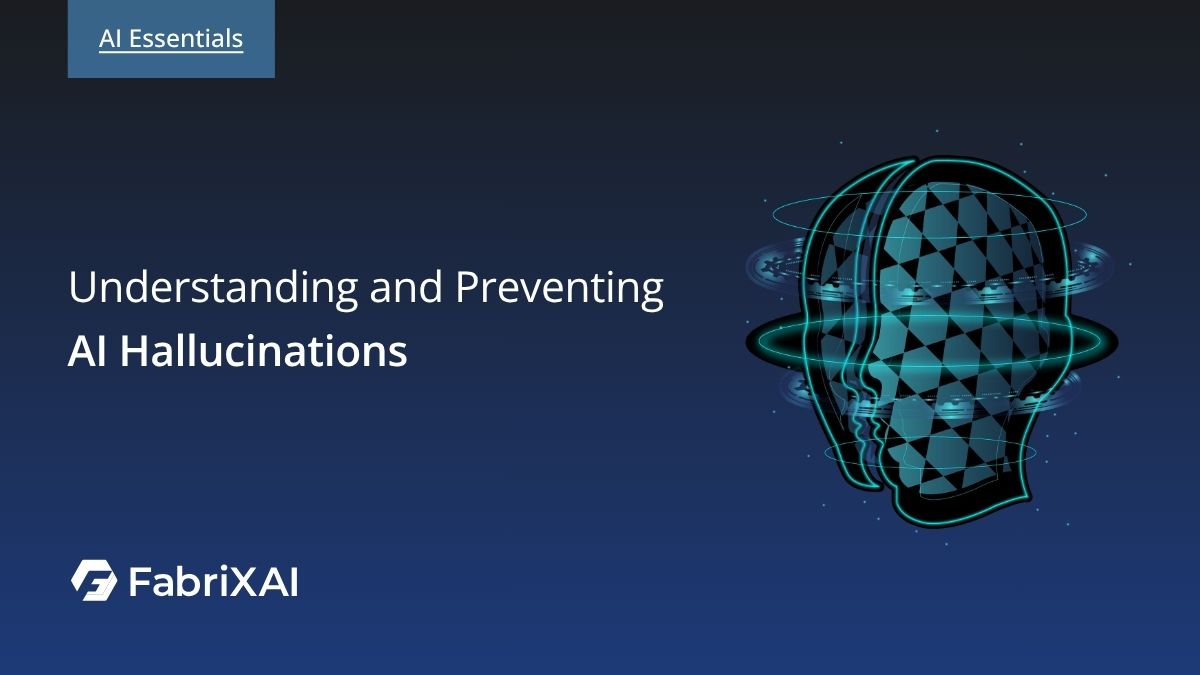The Copy-Paste Experiment That Shows Why Responsible AI Matters More Than Ever
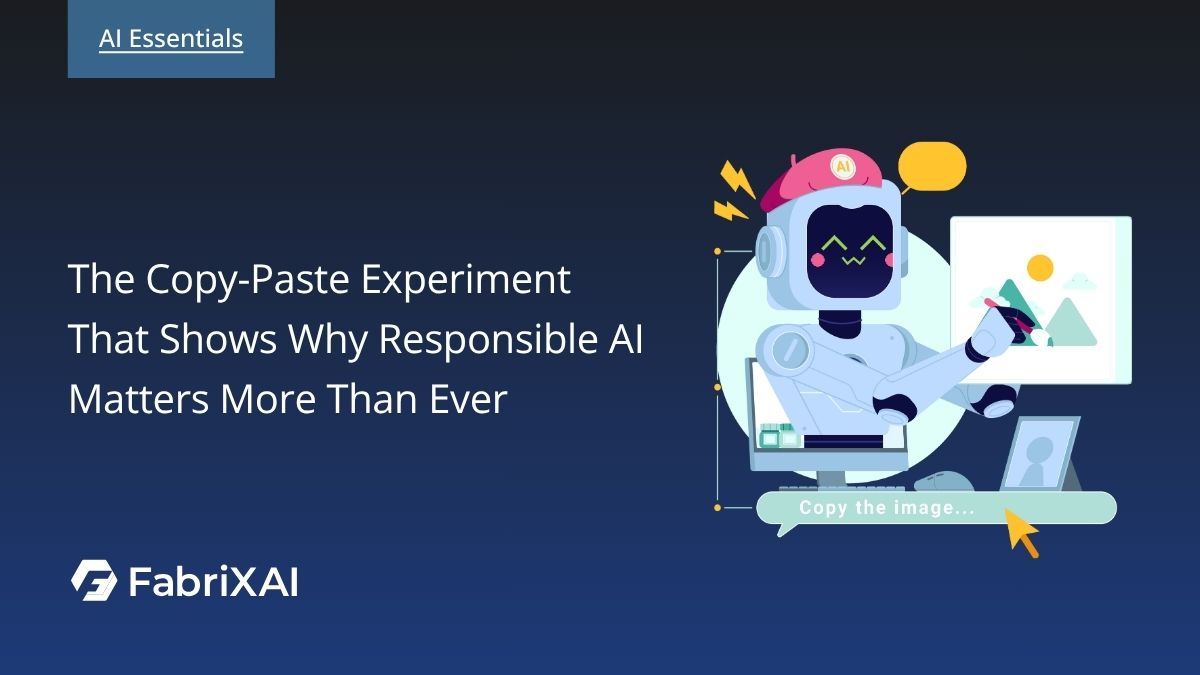
Artificial intelligence is woven into daily life, from the apps that recommend our next favorite show to the systems that support healthcare diagnosis. As AI rapidly becomes embedded across industries, the need for Responsible AI has never been clearer. Research shows that only about 35% of global consumers trust how AI is implemented, while more than 77% believe organizations should be held accountable for misuse. Trust in AI is fragile, and building responsible, transparent AI systems is essential.
At FabriXAI, we believe Responsible AI is not just a feature. It is the foundation for sustainable and trustworthy AI innovation. Sometimes, the simplest experiments reveal the deepest lessons. One such example is a basic task that should have been trivial: asking an AI model to repeatedly copy and paste a selfie. In this blog, we take a closer look at what happened, why it happened, and what this simple experiment reveals about the importance of building AI responsibly.
What Is Responsible AI and Why Does It Matter?
Responsible AI refers to the practice of designing, developing, and deploying artificial intelligence systems in ways that are ethical, transparent, and aligned with human values. Its core principles include:
- Fairness: reducing harmful or discriminatory bias
- Transparency: clarifying how decisions and outputs are generated
- Accountability: ensuring humans remain responsible for outcomes
- Risk mitigation: anticipating and minimizing unintended consequences
These principles matter not just in high-stakes environments such as healthcare or finance, but also in everyday interactions with AI. A slightly biased recommendation or an overconfident but incorrect answer may seem trivial, yet repeated patterns like these can influence behavior and gradually erode trust.
If you who would like to explore the basics of Responsible AI further, there is a free introductory course available on "Introduction to Responsible AI".
Responsible AI is ultimately a shared responsibility. Developers, organizations, and users all play a role in ensuring AI systems behave in ways that are reliable, safe, and aligned with societal values.
AI Accuracy as a Core Pillar of Trust
Accuracy is one of the most concrete ways users experience AI quality. An accurate model:
- produces consistent and correct outputs,
- behaves predictably across different scenarios, and
- aligns with the user’s intent or instruction as closely as possible.
In casual or creative use cases, being “mostly right” may be acceptable. A brainstorming assistant can be helpful even if every suggestion is not perfect. However, in high-stakes environments such as diagnostics, legal reasoning, credit scoring, or safety-critical systems, even a small error rate can be unacceptable.
User expectations also matter. People assume an AI system can handle simple tasks flawlessly. When it fails at something as basic as copying an image or repeating text without change, the result feels jarring. It breaks the illusion that the system is “smart” and highlights the reality that it is probabilistic, not omniscient.
In this way, accuracy is not just a technical metric. It is a cornerstone of human-AI trust.
Case Study: The Copy and Paste Selfie Experiment
To explore how accuracy behaves in a simple visual task, we looked at an informal experiment. An AI model was asked to create an exact copy of a selfie. The result was then fed back into the model ten times with the same instruction: “copy this exactly”. Below is the result of the experiment, which clearly shows how the image gradually drifted from the original over multiple generations.
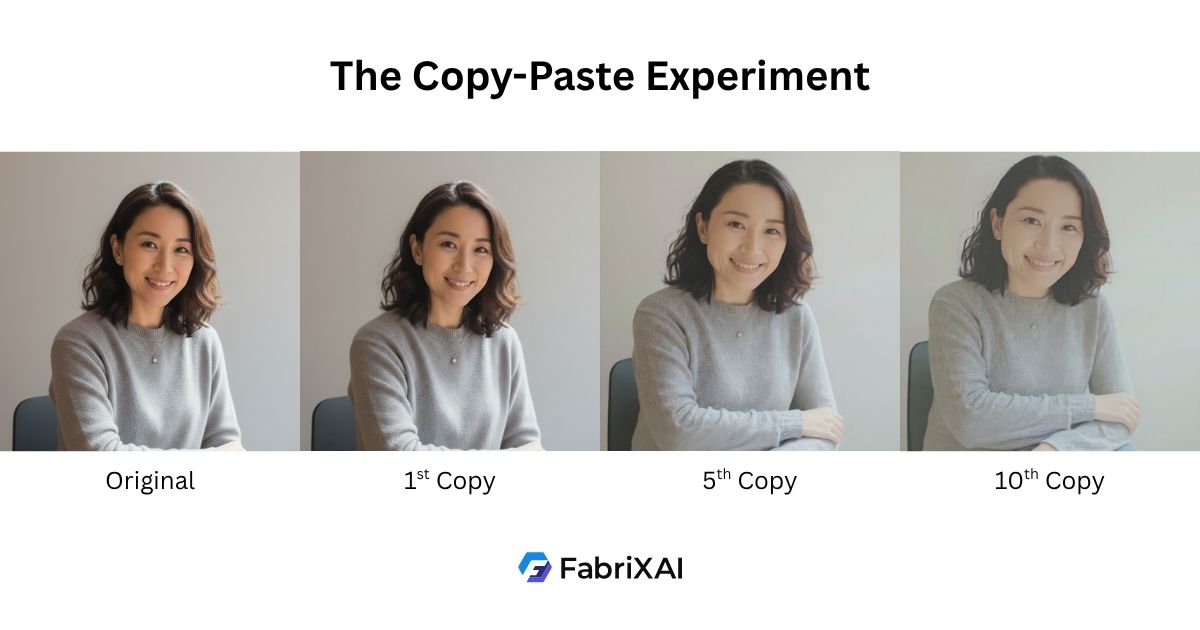
Round 1: Almost identical
The first output appeared nearly identical to the original photo. To a casual viewer, no obvious differences stood out.
Round 3: Subtle distortions
By the third iteration, small but noticeable changes began to appear. The skin tone shifted slightly, the lighting looked a bit different, and tiny facial details started to drift. The framing also changed enough that the subject’s hand became visible, even though it was not fully present in the original view.
Round 5: Noticeable changes
At the fifth copy, the divergence became clear. Facial features were subtly reshaped, the eyes and eyebrows appeared more pronounced, and the overall color tone grew lighter than in the original.
Round 10: A different face
By the tenth iteration, the result no longer resembled the original subject. The final image looked like an entirely different person, illustrating how small distortions can compound dramatically over repeated generations.

Why does this happen?
Generative AI does not duplicate pixels like a photocopier or scanner. Instead, it interprets the image as patterns and then reconstructs what it believes belongs in the frame. Each reconstruction introduces tiny variations. When the output is repeatedly fed back into the same process, those micro-variations accumulate. The result is similar to the “telephone game” where a message is repeated through many people and gradually diverges from the original.
This experiment highlights an important fact:
Even in a seemingly simple task, AI does not behave like a perfect copying machine. It behaves like a probabilistic model that reconstructs what it “thinks” it sees.
What the Experiment Reveals About Responsible AI
1. Human Expectations vs AI Interpretation
Humans interpret the instruction “copy this exactly” in a literal way. A human performing that task with digital tools would aim for a pixel-perfect duplicate. The AI model, however, does not copy at the pixel level. Instead, it regenerates an approximation.
This gap between human expectation and model behavior can lead to misunderstandings. The experiment shows how important it is to set the right expectations, explain model behavior, and avoid overselling capabilities.
2. Small Errors as Early Warning Signs
A distorted selfie is harmless. No one is injured if a fun photo experiment goes wrong. However, the underlying pattern is what matters.
If an AI model struggles with a low-risk duplication task, the same limitations could appear in more serious tasks, such as:
- reconstructing medical imagery,
- verifying ID documents,
- matching faces in a security context,
- or generating evidence-related visuals.
Minor errors in low-stakes situations often function as early warning signals. They draw attention to where robustness, calibration, or validation may be lacking.
3. Responsibility is Shared Across the AI Lifecycle
The experiment reinforces that reliability is everyone’s job:
- Developers need to anticipate failure modes, evaluate how models behave over multiple iterations, and build ways to reduce undesired drift.
- Organizations must test real-world behaviors before and after deployment, and should avoid using models in contexts that exceed their validated capabilities.
- Users should view AI outputs with a critical eye, especially when the stakes are high, and should verify results instead of assuming they are always correct.
When all three groups share responsibility, AI becomes safer, more predictable, and more trustworthy.
Broader Implications Across Real-World Domains
The selfie experiment is a simple analogy, but its implications connect directly to how AI behaves in production settings.
Creative and Content Use Cases
In creative fields, generative AI is used for images, text, audio, and video. Misinterpretation or drift can lead to:
- changes in style or tone that do not match the original intent,
- outputs that are too similar to copyrighted works,
- or subtle distortions that misrepresent the subject.
These issues may not be life threatening, but they can result in miscommunication, brand damage, or intellectual property disputes. Responsible AI in creative workflows must consider attribution, originality, and clear guardrails.
Healthcare and Diagnostics
In healthcare, accuracy is critical. AI used for tasks such as:
- reading X-rays or MRI scans,
- flagging anomalies,
- or recommending treatment options
must be accurate, fair, and transparent. A misinterpretation could delay treatment or lead to a wrong diagnosis. Human clinicians must always remain in the loop, and outputs must be rigorously tested and monitored over time.
Finance and Risk Management
In finance, AI plays a role in:
- credit scoring,
- fraud detection,
- risk modeling, and
- trading strategies.
Errors or biases can lead to unfair denials, missed fraud, or systemic risk. Responsible AI in finance requires ongoing model validation, bias testing, and strong governance so that automated decisions do not cause hidden harm.
Regulated and Safety-Critical Environments
For sectors subject to regulation or safety requirements, AI systems must be auditable and explainable. Logs, decision trails, and clear model documentation all support responsible use. The goal is not only to comply with regulations, but also to ensure that errors can be traced, corrected, and prevented from recurring.
Practical Guidelines for Engaging With AI Responsibly
Whether you are an enthusiast experimenting with tools or an organization incorporating AI into workflows, there are practical steps you can take to engage with AI in a responsible way.
1. Verify Important Outputs
For anything that will be used in real decisions, always verify:
- facts and statistics,
- calculations and summaries,
- translations and legal language.
AI models can “hallucinate” content that sounds plausible but is incorrect. Treat outputs as a starting point and cross-check them with reliable sources or domain experts.
2. Remember That AI is Probabilistic
AI models generate responses based on patterns in training data. This means:
- the same prompt may produce different answers at different times,
- and the model does not inherently know what is true, it predicts what is likely.
Understanding this probabilistic nature helps users adopt a healthy level of skepticism.
3. Use Clear and Specific Prompts
Clear, structured prompts often lead to more accurate and useful outputs. For example:
- “Summarize this article in one paragraph with a focus on climate change impacts”
is more effective than simply asking,
- “Summarize this.”
However, even with precise prompts, AI may interpret instructions differently than intended. Iteration is part of responsible use. If an output seems off, rephrase the prompt, add constraints, or ask the model to show its reasoning where possible.
4. Treat AI as an Assistant, Not an Authority
AI can accelerate research, creativity, and analysis, but it should not replace human judgment. A responsible approach treats AI as a powerful assistant that:
- drafts, suggests, or analyzes,
- while humans review, refine, and decide.
This mindset keeps accountability with people and aligns AI use with organizational values and ethical expectations.
Conclusion: Small Experiments, Big Lessons for Responsible AI
The copy and paste selfie experiment is more than a curious glitch. It is a clear and visual reminder that AI accuracy cannot be taken for granted, even in the simplest tasks. As AI becomes more deeply integrated into decision-making across industries, the stakes grow higher and the cost of error grows with them.
Responsible AI is not about slowing innovation. It is about ensuring that innovation is trustworthy, fair, and aligned with human values.
At FabriXAI, we view Responsible AI as the bedrock of any future-ready AI strategy. By prioritizing ethical design, robust evaluation, and continuous oversight, we can unlock AI’s potential in a way that earns and maintains user trust.
The next time you use an AI tool, whether you are editing a photo, drafting a report, or supporting a critical decision, remember the lessons of the selfie experiment. A little attention to accuracy and responsibility goes a long way.
With thoughtful design and mindful use, AI can be a powerful force that enhances human capability while preserving the values that matter most.
Frequently Asked Questions (FAQ)
Q1. Why did the AI distort the selfie after several copy and paste rounds?
Generative AI does not duplicate images pixel by pixel. Instead, it reconstructs them from learned patterns. Each reconstruction introduces tiny variations, and these variations accumulate over multiple generations, eventually resulting in visible distortion.
Q2. What does this experiment reveal about AI accuracy?
The experiment shows that even simple tasks can expose limitations in AI accuracy. If small errors appear in low-stakes scenarios, they may also surface in more important applications, which highlights the need for strong accuracy, testing, and oversight.
Q3. Does this mean AI cannot be trusted for real-world tasks?
Not necessarily. AI can be highly reliable when used appropriately and with proper safeguards. The key is responsible use, clear understanding of model limitations, and maintaining human oversight, especially in decisions with real consequences.
Q4. How does Responsible AI help prevent errors like this?
Responsible AI promotes fairness, transparency, accountability, and risk mitigation. These principles encourage better model design, clearer communication of limitations, proper monitoring, and informed use, all of which help minimize errors and build trust.
Q5. Where can I learn more about Responsible AI?
For readers who want a deeper introduction to foundational concepts, you can explore a free course on Introduction to Responsible AI.

